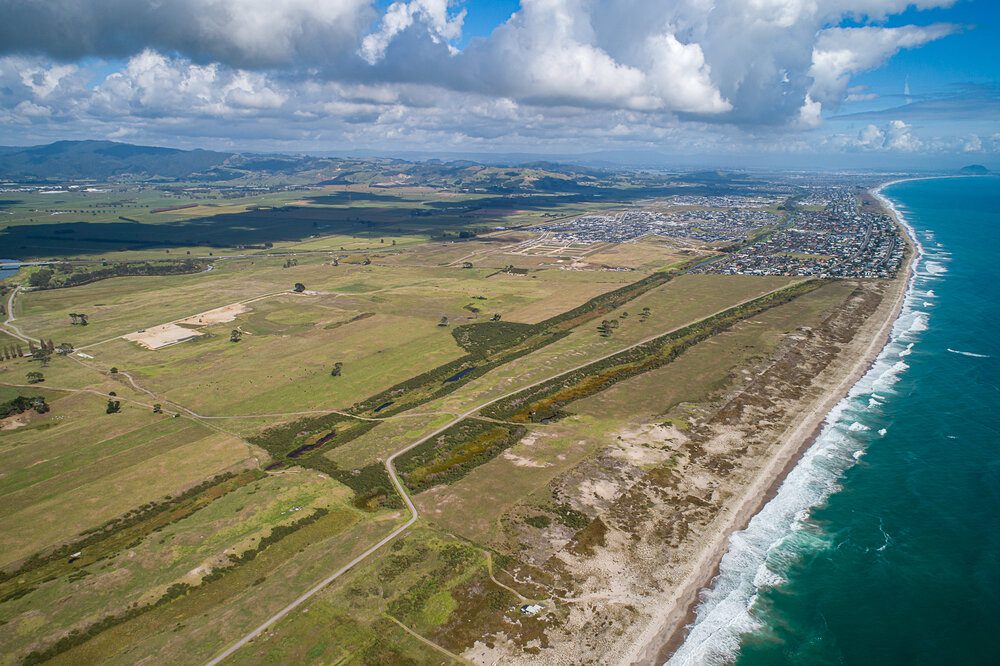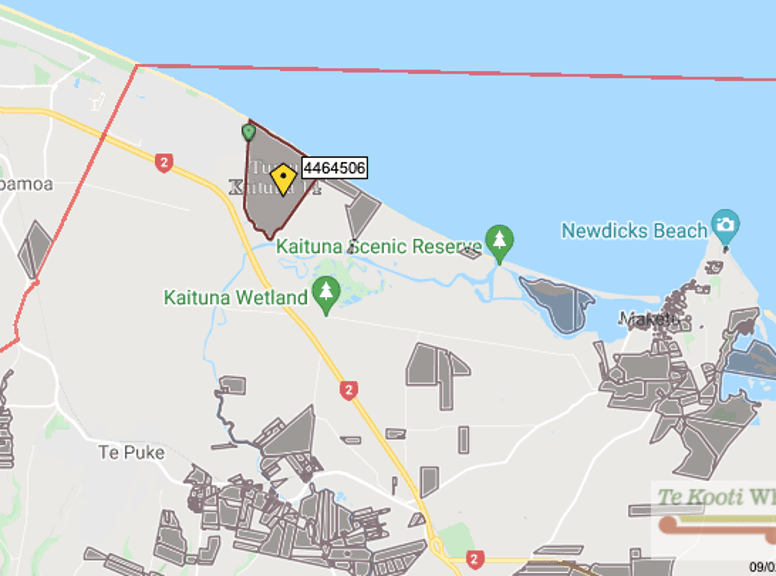Tēnā koutou katoa!
Anei tāku kōrero ki a koutou i tō tātou whenua o Te Tumu Kaituna 14. Ko te tūmanako he tīmatanga noa iho tēnei o te whāinga atu i ngā tini kōrero mo te whenua i heke ai te toto o ngā tūpuna i te rironga atu, me te rironga mai. E mea ana te kōrero, whatungarongaro te tangata, toitū te whenua.
Kei wareware i a tātou, nā rātou i whai wāhi ai tātou ki tō tātou whenua. Waihoki, mā tātou ō tātou uri e whai wāhi ki reira!
Greetings to you all!
Here is my presentation to you about our land of Te Tumu Kaituna 14. Hopefully this is only the beginning of our exploration of the information relating to our land upon which our ancestors’ blood was shed, both in the loss of the land and its recovery. There is a saying that whilst people may disappear over time, the land remains.
We cannot forget that it is because of our ancestors that we can take our place upon it. In the same way, it is because of us that our descendants will one day take their own place upon it.
Tēnā, mā koutou…
Watch the video below.
Te Ūnga Mai me te Whakanohonoho
1350 – 1500
It is generally believed that Te Arawa canoe arrived about 1350.
For the next five generations Te Arawa had settled the area from Mauao to beyond Pukehina, and the inland country to Rotorua.
Gradually the people of Te Rangihouhiri – Ngāi Te Rangi – moved into the area. A series of skirmishes resulted in the battle of Pōporohuamea, and Maketū and the surrounding area was taken.
Not long after Mauao and other parts of Tauranga were taken from Waitaha by Ngāi Te Rangi at the battle of Te Kōkōwai.
Te Hokinga Atu
1500 – 1835
Waitaha and Tapuika remained settles around their respective mountains of Ōtawa and Rangiuru maintaining an uneasy peace with Ngāi Te Rangi.
Gradually the inland Te Arawa based around Rotorua returned to the area as allies and relations of Waitaha and Tapuika, some even settling at Maketū.
Inland wars between Te Arawa and Tainui spilt over to the coast, whereby Te Waharoa of Ngāti Hauā sacked Maketū, killing Te Ngahuru, an important chief of Ngāti Whakaue.
Te Pakanga
23 April 1836
Kahawai of Ngāti Rangiwewehi grew impatient for revenge and went to Ōtawa to await the rest of Te Arawa to organize themselves.
When the rest of the inland Te Arawa and their allies from Waitaha, Tapuika and elsewhere, they attacked the pā at Te Tumu and took it.
Ngāi Te Rangi were defeated and pursued to the mouth of Te Wairākei Stream at Papamoa.
Small resultant skirmishes did not change the new boundary between Te Arawa and Ngāi Te Rangi.
Te Kooti Whenua Māori 1
Ōtumumatawhero
Te Kōpua
Te Karaka
Te Pāroa
Te Tumu
Te Kakari
Papahīkahawai
Ngā Whakawākanga Kooti
2 May 1883
Te Tumu Kaituna was awarded by the Native Land Court to Ngāti Tūnohopū and Ngāti Whakaue, as well as Ngāti Rangiwewehi, Ngāti Uenukukōpako and Ngāti Rangiteaorere.
The witnesses for the last three iwi were respectively Hōri Te Rahoatua, Tāmati Hapimana and Te Kiri Karamu.
Each of the hapū put in a few people from other iwi through aroha.
Ti Whenua Māori 2
Partitions
TK1 to N’Uenukukōpako 156a
TK2 to N’ Rangiteaorere 101a
TK3 to N’Rangiwewehi 333a
TK4 to N’Rangiwewehi 751a
TK5 to N’Rangiteaorere 226a
TK6 to N’Uenukukōpako 353
Te Kotikoti Whenua
28 August 1890
Te Tumu Kaituna was partitioned into 13 blocks, of which Blocks 3 & 4 were awarded to Ngāti Rangiwewehi, 1 & 6 to Ngāti Uenukukōpako and 2 & 5 to Ngāti Rangiteaorere.
The witnesses for the three iwi were respectively Hōri Te Rahoatua, Tāmati Hapimana and Hēmi Kōkiri.
Eventually Blocks 4, 5 & 6, were sold to the Crown. That was 1330 out of a total of 1920 acres, or nearly 70% of the land.
Blocks 1, 2 & 3 were further partitioned, but eventually amalgamated as Te Tumu Kaituna 14, except for a small partition of Block 1 that had already been sold.
Te Rohe 2022




